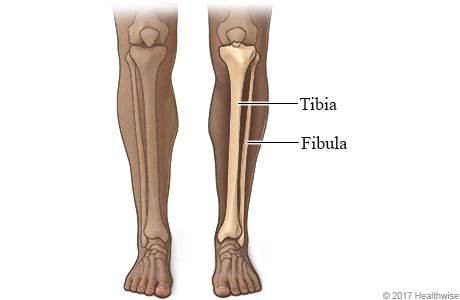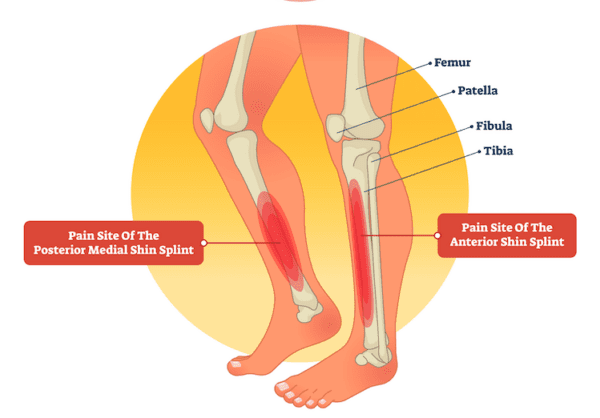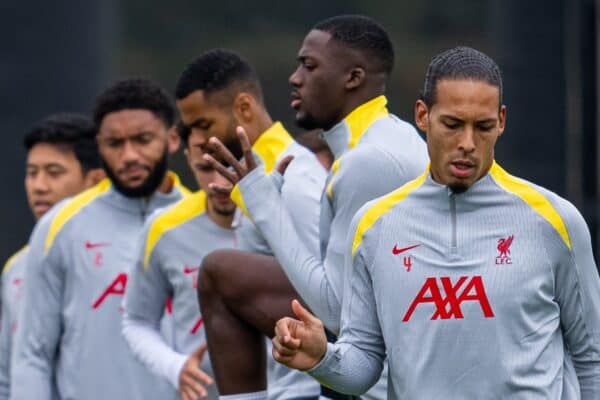Curtis Jones is currently out with what Jurgen Klopp called a “stress reaction of the tibia” and has yet to play this season.
The issue first appeared late in pre-season and Jones’ return to match timeline was believed to be about three weeks. However, as he began ramping up that return to play and participating in team trainings, he experienced pain again on two consecutive days.
Jones was subsequently ramped back down and although it isn’t expected that he will need another three weeks this time, he’s obviously still missing matches. Additionally, the club have given no timeline on his return.
On the outside looking in, it can seem a bit confusing and bewildering as to Jones’ rollercoaster of ‘he’s on his way back, he’s training’, ‘oh he’s back out’, ‘we’re not sure when he’ll be back’.
However, let’s take a closer look at his injury to understand why that’s the case and key variables that may be dictating his return timeline.
What’s a “tibial stress reaction”?
Tibial refers to the tibia, which is your shinbone.

A stress reaction falls under the umbrella of “bone stress injury” (BSI) and refers to a weakening in the bone, as follows:

Generally, BSI occurs due to repetitive stress and overload on the bone and are most common in running and jumping sports due to the repetitive, high load stress placed on the lower body.
I’ll spare you the complete physiological details but essentially when a bone can’t repair itself (‘remodelling’) as quickly as it’s being loaded and stressed, it can lead to bone stress injuries.
A stress reaction is the first and least severe – a precursor to stress fracture and complete fracture.
Accordingly, it makes sense why Jones had this issue develop towards the end of pre-season when he had been involved in activity for an extended period of time and also why the club is being so cautious with him – you have to be proactive and nip this in the bud, lest it turn into a far longer-lasting issue; whether that’s a higher grade stress reaction, a stress fracture or complete fracture.
How common are they?
Tibial stress fractures are the most commonly occurring in the lower body, along with the metatarsals – long bones – of the feet.
They are further categorised by the location of the reaction – either posteromedial (back middle) or anterior (front) part of the shin.

Key timeline factors
The location of the tibial stress reaction is important because posteromedial are considered ‘low risk’ whereas anterior are considered ‘high risk’ due to higher chances of delayed healing and progression to a fracture.
Two reasons for that increased risk are potentially the higher load on the anterior part of the tibia and less blood flow (vascularity) to that region.
Accordingly, whether Jones has a posteromedial or anterior tibial stress reaction is a key factor in his return timeline and how conservative or aggressive the club physios will be.
An additional factor, as seen in the bone stress injury spectrum picture above, is there are also different grades of a stress reaction.
We don’t have that information with Jones but based on his initial three-week deloading timeline and the fact that he gets assessed regularly as an elite athlete, I imagine it’s on the lower grade.
Return to play management

For these reasons, the high risk for reinjury seen with bone stress injuries – previous injury is the biggest predictor of future injury in this case, and how early it is in the season, it makes sense why Liverpool are being very methodical with his return to play process.
The risk-reward of trying to rush the process right now – even with the midfield availability crunch – falls squarely into risk.
The key – as we already saw with Jones as he was ramping up – will be how that tibial stress reaction responds to the increase in activity.
It’s truly a day-to-day injury – and that’s a key reason why the club nor Jurgen Klopp have put any sort of timeline on it. You increase activity intensity, assess, repeat, until you’re in the clear.
It can be a topsy-turvy, frustrating process especially if you’re just seeing it from a fan’s perspective but hopefully you now have more insight into the situation. Patience is a virtue!

















Fan Comments